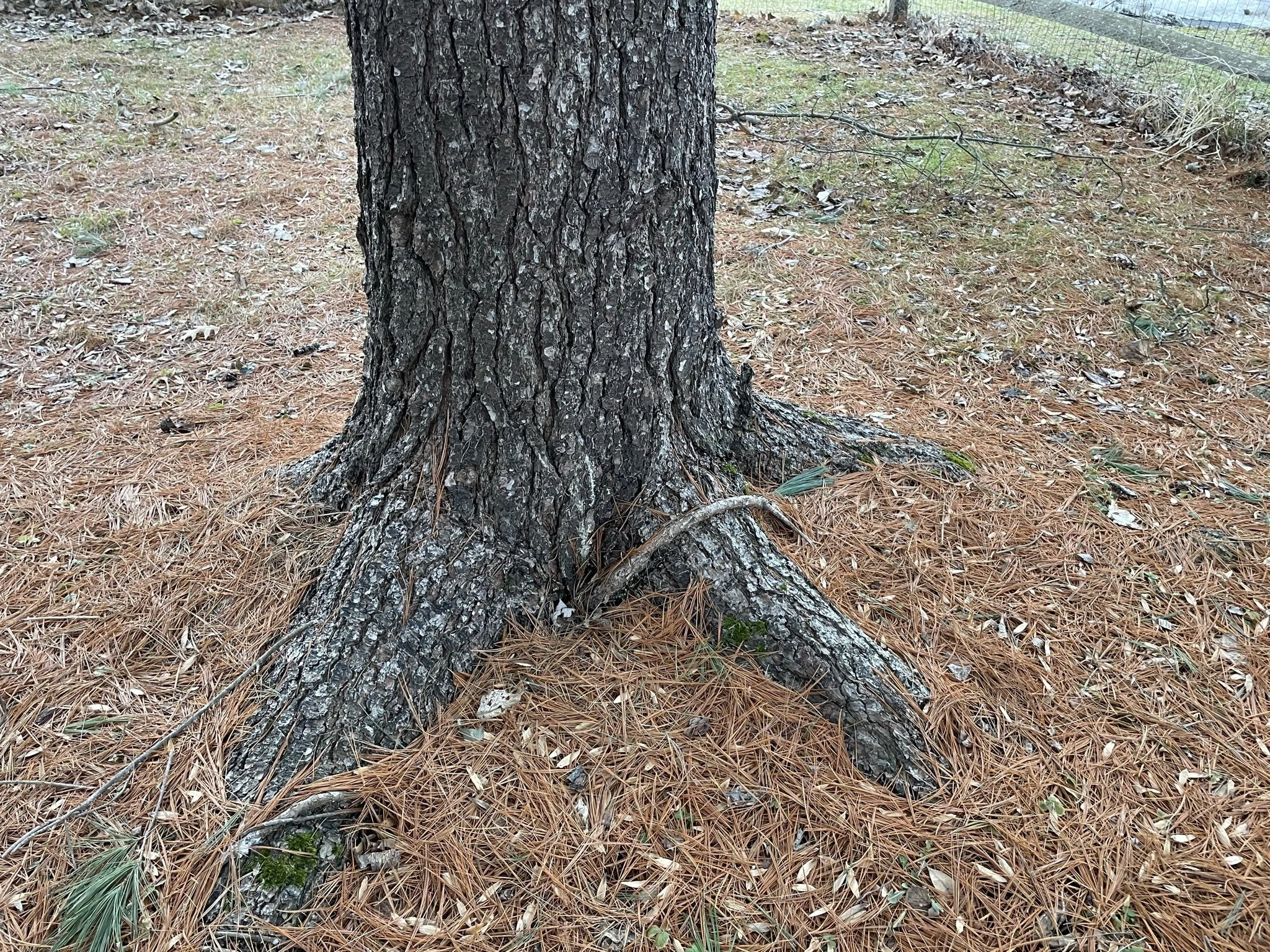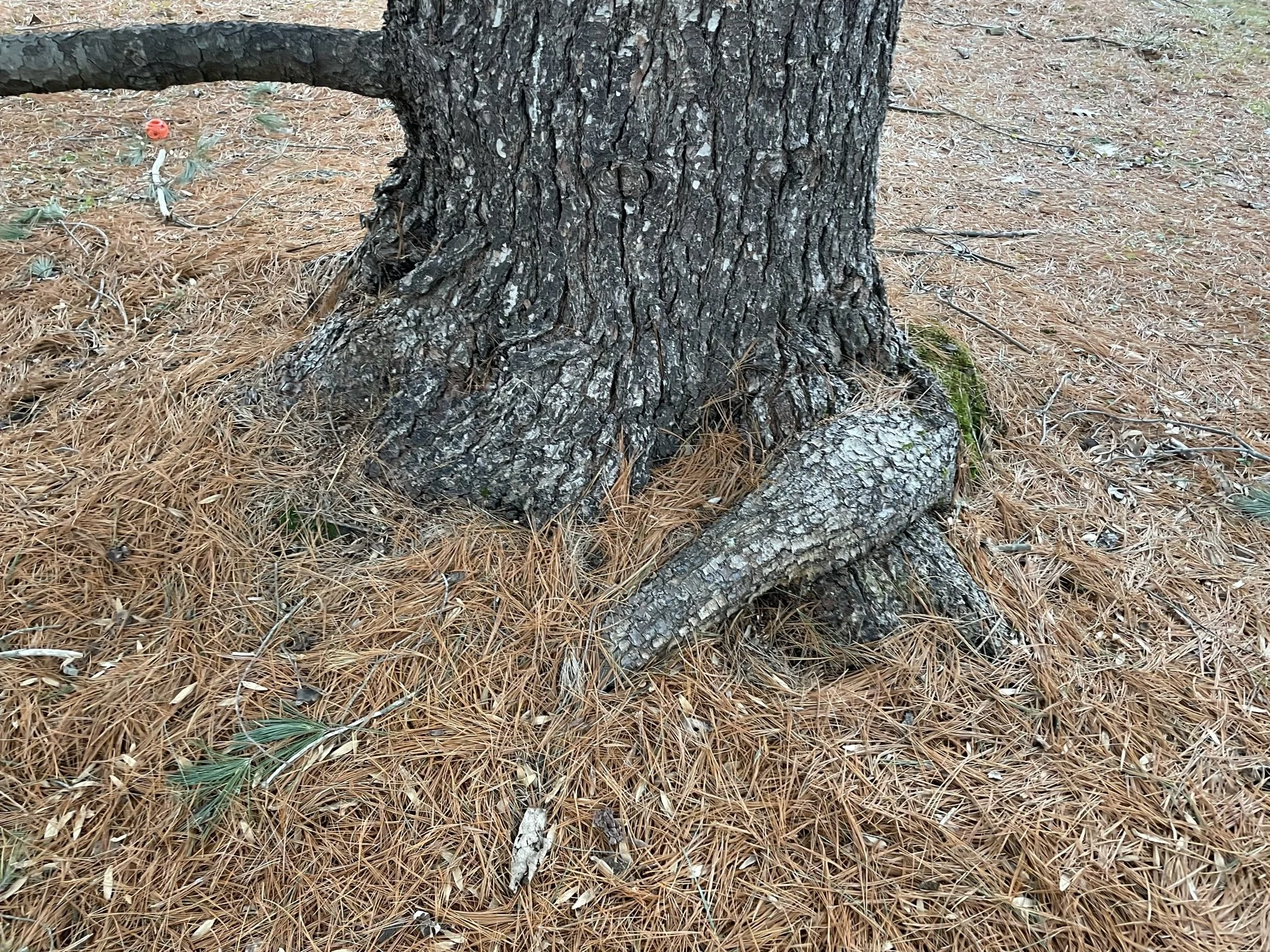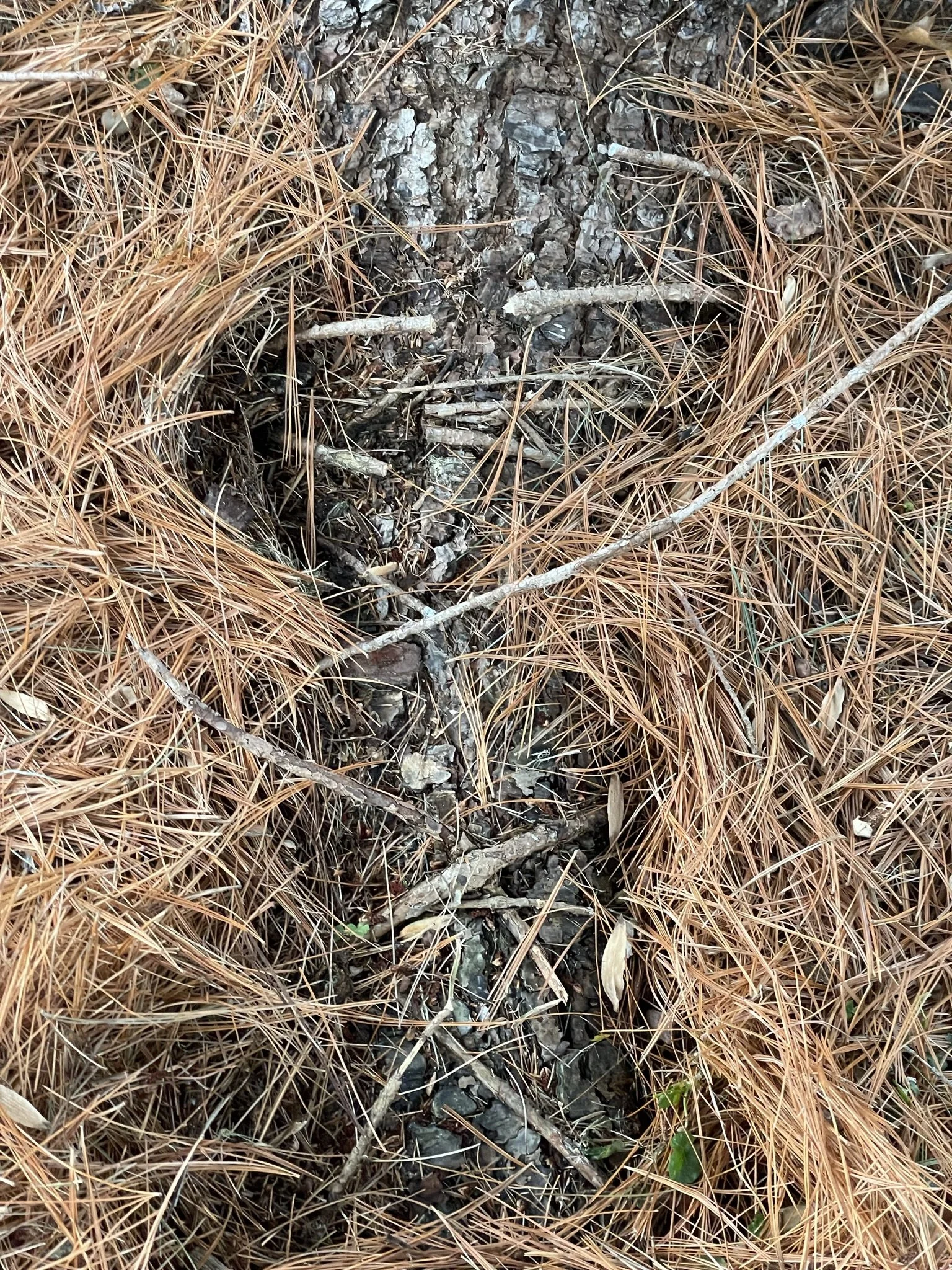Girdling Roots, the Silent Killer
Terms:
Root Flare: The raised, cone shaped area at the bottom of a tree truck where the roots emerge from the trunk and spread. Must be exposed to air to prevent the tree from suffocating.
Root Ball: The dense core of a trees roots, typically extending out in diameter to the edge of a trees longest limb (ie. edge of the canopy, and obviously underground). Roots will extend beyond this, but damage to the root ball itself is typically fatal
If you’ve ever planted a tree, you’ve probably seen the advice to cut any “circling roots” or “girdling roots” on the tree’s root ball before you put it in the ground.
As the names suggest, these simply are roots that are circling around the root ball, and over time will tighten (“girdle”) ultimately fatally strangling the tree’s other roots.
While common with nursery grown trees (as a container will drive roots sideways), they can occur with planted established trees as well. Certain species of tree, like White Pines, are more prone to this others. Tightly packed trees are prone to this as well, where neighboring trees roots grow over each other or the density of competing root balls drives a tree’s roots in a circle over its own root ball while searching for moisture.
Luckily in both cases, if caught before the roots grow too large, it is as easy as cutting the offending root to stop the gridling process.
How To:
Cutting: Use any kind of pruning clippers. Remember to sanitize them before use, and between trees. I typically give the blades a good wipe down with a bleach based cleaning wipe, then rinse off with water.
Timing: Some arborists recommend only cutting girdling roots in winter or after the tree has gone dormant. Regardless of when you do it, you should never cut roots (or prune for that matter) when there is high humidity or a risk of rain in the next few days. Moisture invites fungus, which will invade the cut before the tree has time to seal it off. When planting a new tree, always cut the roots before putting it in the ground, regardless of the above.
For a mature tree (typically 15+ years old), you can safely cut girdling roots up to thumb thickness without experiencing much if any impact on the tree. Larger than that, consider the size of the other roots coming out of the root flare. Gridling roots equal in diameter to the other major root lines likely can’t be removed without significant endangering the tree. If you’re worried, definitely consider hiring a ISA certified arborist to come take a look.
For younger trees, roots likely have not had time to grow to significant thickness. Cut one at a time, giving a month or two between to let the tree recover. Again, if worried, consider hiring an arborist.
A fairly obvious girdling root. As it grows larger, it will act like a tourniquet cutting that major root off from the rest of the tree if not cut.
Another example of girdling roots. You can see the circle they form around the trunk.
This is a good example of a girdling root that wasn’t removed before it grew. It is steadily cutting the root off from the main tree, and likely constricting more of the root ball underground.
Remember to trace the root flare down as far as you can above ground. In this example, removing the covering pine needles revealed several girdling roots that needed to be cut.



